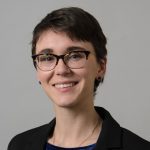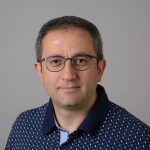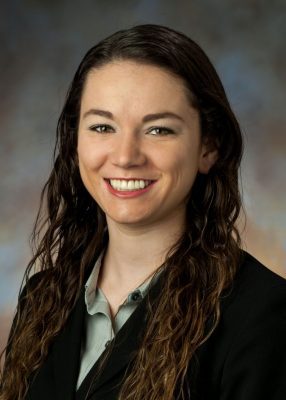 Kerry Lynn Davis-Amendola beautifully shares her experience as a current Ph.D. student in the Electrical Insulation Research Center (EIRC) paying special attention to the importance of her lab mates and the camaraderie that awaited her when she joined the lab. The inspiring article, The Best Part of a PhD that No One Is Talking About, appears in the “Young Professionals” section of the July/August 2023 edition of the journal IEEE.
Kerry Lynn Davis-Amendola beautifully shares her experience as a current Ph.D. student in the Electrical Insulation Research Center (EIRC) paying special attention to the importance of her lab mates and the camaraderie that awaited her when she joined the lab. The inspiring article, The Best Part of a PhD that No One Is Talking About, appears in the “Young Professionals” section of the July/August 2023 edition of the journal IEEE.
Author: Rhonda Ward
IMS Welcomes New Staff Members
IMS Industrial Affiliates Program Hosts 2023 Annual Meeting
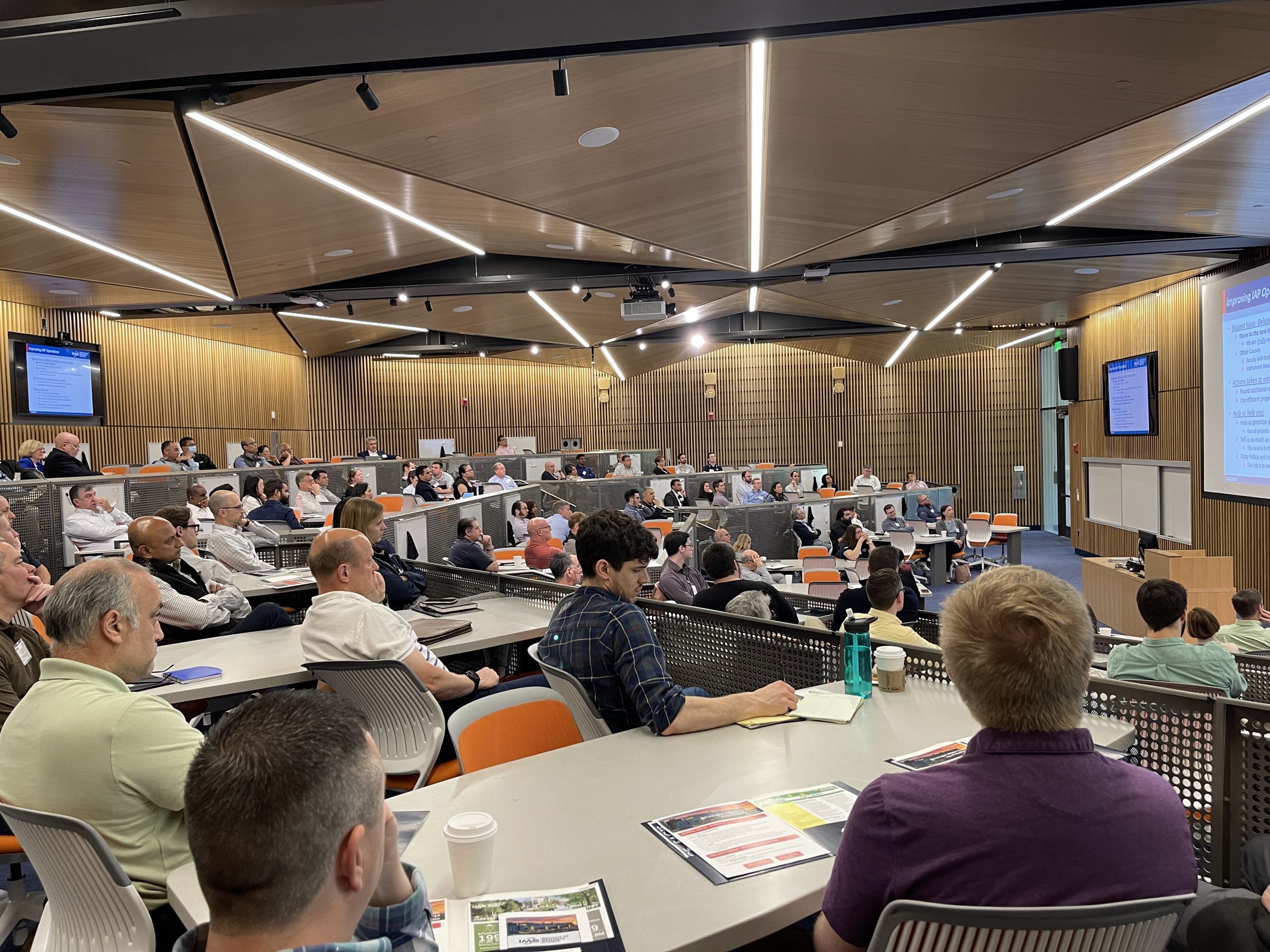
On May 25, 2023, the Institute of Materials Science (IMS) Industrial Affiliates Program (IAP) held its first in-person annual meeting since the onset of the COVID-19 pandemic in 2020.
The meeting began with a welcome message by Dr. Hatice Bodugoz-Senturk, Associate Director of the IMS Industrial Affiliates Program, followed by remarks by Dr. Steven L. Suib, Director of IMS, and Dr. Paul Nahass, Director of the IMS Industrial Affiliates Program. Dr. Bryan Huey, Department Head of Materials Science and Engineering (MSE) gave an overview of the MSE department and its achievements; and Dr. Kelly Burke, Director of the IMS Polymer Program, discussed the latest developments in polymer science.
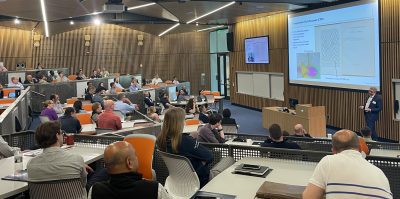
The morning session featured three presentations by IMS faculty members from different departments. Dr. James “Nate” Hohman, Assistant Professor of Chemistry, talked about his research on experimental foundations for next-generation materials and interfaces, and how he uses big science, big data, and big AI to discover new materials for various applications. Dr. Georgios Matheou, Assistant Professor of Mechanical Engineering, presented his work on predictive modeling and simulation of multi-physics flows, and how he collaborates with industry partners in renewable energy, aerospace, and health care sectors. Dr. Vahid Morovati, Assistant Professor of Civil and Environmental Engineering, explained his theoretical framework to model the long-term mechanical behavior of elastomeric materials considering damage accumulation and degradation.
The luncheon session featured a keynote address by Dr. Anne D’Alleva, Provost and Executive Vice President for Academic Affairs, who shared her vision and goals for UConn’s academic excellence and innovation. She also highlighted the importance and impact of materials science and engineering in addressing the global challenges and opportunities in the 21st century. The luncheon concluded with closing remarks by Dr. Paul Nahass.
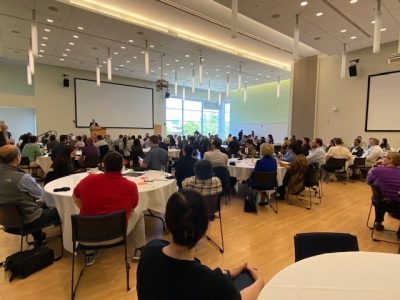
The meeting was attended by more than 100 participants from industry affiliates and external partners along with IMS faculty, students, and alumni. The meeting also showcased the annual Joint Poster Session by IMS Polymer Program and Materials Science and Engineering (MSE) students, demonstrating their projects and achievements in materials science and engineering. Industry partners were also given tours of core laboratories in the Science 1 building, the new home to IMS.
The IMS Industrial Affiliates Program provides materials characterization services to its industry partners. The program also facilitates collaborations between IMS faculty and students and industry partners on research projects of mutual interest.
The Institute of Materials Science is an interdisciplinary research institution that supports over 100 faculty members from 15 departments across UConn’s schools and colleges. The institute offers advanced degrees in polymer science and materials science, as well as state-of-the-art research facilities for its students and faculty to conduct research that is changing the future of materials science.
Naba Karan Wins DoD DURIP Funding
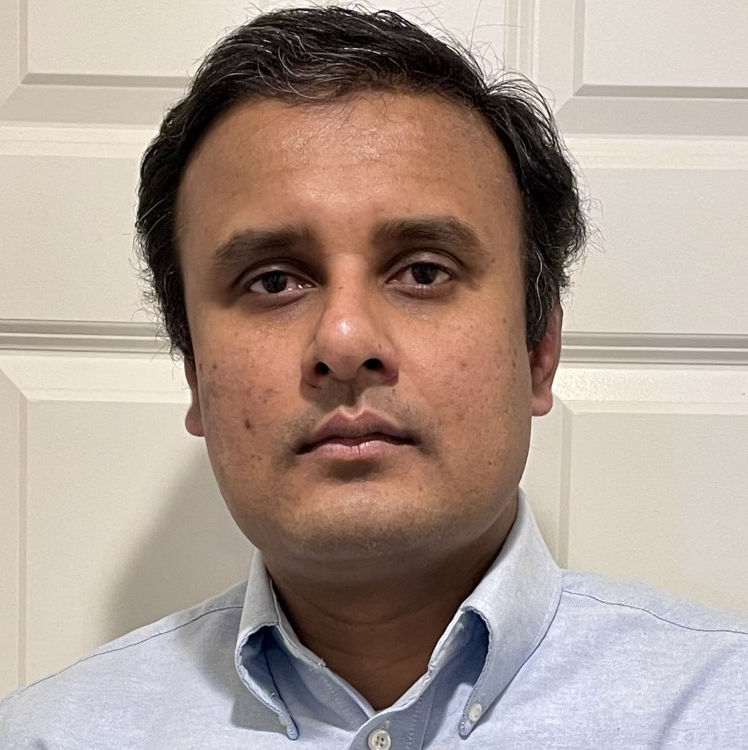
The U.S. Department of Defense (DoD) awarded four UConn scientists with high-profile grants to fund the acquisition of technology to bolster their research capabilities.
The highly competitive Defense University Research Instrumentation Program (DURIP), offered by the Air Force Office of Scientific Research (AFOSR), the Army Research Office (ARO), and the Office of Naval Research (ONR), funds cutting-edge research projects with potential to assist national defense.
Lithium-ion (Li-ion) batteries are one of the most common rechargeable energy storage technologies on the market. As a rule, they are quite safe under normal operating conditions, powerful, and scalable, from smartphones to electric cars. But given the number of Li-ion batteries produced around the world, their relatively small failure rate has still resulted in some high-profile stories of Li-ion batteries going into thermal runaway – an event when a battery catches fire, explodes, and releases toxic gases.
IMS member Naba Karan, an assistant research professor at the Center for Clean Energy Engineering (C2E2) in the School of Engineering, isn’t surprised.
“You can think of them as bombs,” he says, noting the high quantity of chemical energy contained within Li-ion batteries. And he’s looking to blow them up—on purpose.
With funds from the Office of Naval Research, Karan is constructing a facility at UConn that will explode the batteries in a controlled environment to determine critical safety parameters needed for designing advanced engineering protocols to mitigate thermal runaway events. In a military context, this information will help operators of machinery that depend on these high-powered batteries, such as submarines, determine when internal battery temperatures are exceeding safety thresholds. Most crucially, it will allow them to avoid catastrophic failure by diverting some of this heat.
The equipment will be able to analyze thermal characteristics of all types of energy storage technologies, not only Li-Ion batteries. Since it will be one of the only such facilities in the northeast region, Karan anticipates a high degree of interest and collaboration from other universities and companies looking into studying the safety characteristics of existing and emerging battery chemistries.
IMS Welcomes Mihai “Mishu” Duduta
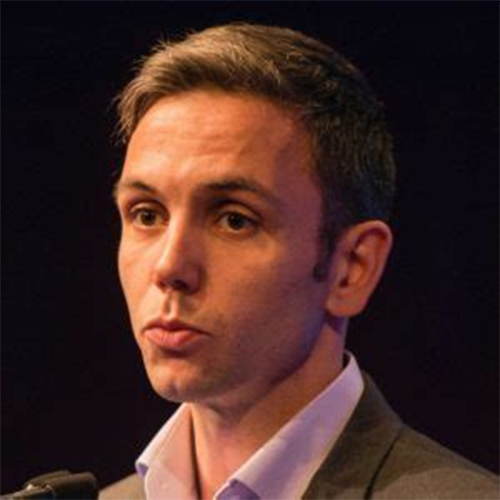
Mihai “Mishu” Duduta has joined the Department of Mechanical Engineering with an appointment in the Institute of Materials Science (IMS). Having earned his B.S. from MIT, he completed his M.S. and Ph.D. at Harvard University. Following the completion of his Ph.D., Duduta joined the faculty of the Department of Mechanical and Industrial Engineering at the University of Toronto as an assistant professor. He is a recipient of the Banting Foundation Discovery Award for 2022 for his research on “Smart Micro-catheters Based on Electro-mechanical Artificial Muscles.”
At the heart of his research “Mishu” (as Duduta prefers to be called) is focused on the science of soft robotics, novel materials, and energy storage. He seeks to “invent new ways to store energy and deliver power that bring new robotic capabilities.”
IMS News reached out to Dr. Duduta to welcome him and learn more about him and his research.
Your research focus includes novel materials, soft robotics, and energy storage. All of these are at the cutting edge of future technology. What led you to pursue this field of science?
I have always been fascinated by energy, and by materials that can act as transducers, effectively transforming one type of energy into another, for example chemical energy stored in covalent bonds of a fuel, to thermal energy, or heat by burning said fuel. I see Robotics as the next area of innovation for energy storage, conversion and harvesting.
You have said that in order for robots to interact more closely with people they must be more compliant, or flexible. How can the combination of materials, soft robotics, and energy storage achieve this goal and what do you see as the future implications as the science advances?
As machines become smaller or softer, we’ll need to invent new materials and mechanisms for actuation, sensing and computation. The end goal is to replicate nature as closely as possible, in an engineered system. If we have artificial muscles that can effectively replace natural ones, and run as efficiently for long periods of time, we can radically change almost all segments of the economy: from healthcare, to agriculture, manufacturing and beyond.
We are happy to welcome you to UConn IMS. How did you become interested in UConn and how will you contribute to student success, a key priority for the University?
UConn has a great location, outstanding students, talented faculty, and fantastic infrastructure. My goal is to train students to be more capable scientists and engineers, but also to develop a strong grasp of how to communicate science effectively, as well as gain an understanding of where their work can bring societal value.
Seth March Joins CAMMA Lab
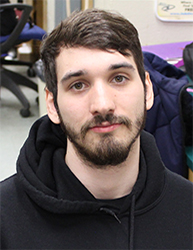 UConn Alum Seth March (’22) has joined the CAMMA Lab as a postdoc. Seth, earned his Ph.D. this year in Inorganic Chemistry under the advisement of IMS Director Steven L. Suib. Seth served as a research assistant and a teaching assistant and has extensive experience in materials characterization and data analysis.
UConn Alum Seth March (’22) has joined the CAMMA Lab as a postdoc. Seth, earned his Ph.D. this year in Inorganic Chemistry under the advisement of IMS Director Steven L. Suib. Seth served as a research assistant and a teaching assistant and has extensive experience in materials characterization and data analysis.
Menka Jain is Co-organizer of 28th IWOE
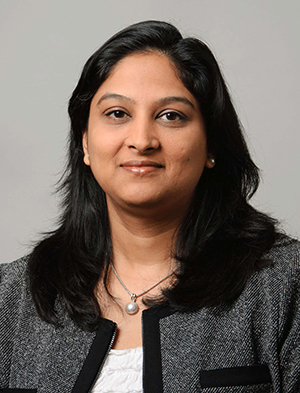
The International Workshop on Oxide Electronics (IWOE) series has become an important venue to discuss recent advances and emerging trends in this developing field. The aim of the workshop is to provide an interdisciplinary forum for researchers – theorists as well as experimentalists – on understanding the fundamental electronic and structural properties and also on the design, synthesis, processing, characterization, and applications of (epitaxial) functional oxide materials.
Associate Professor of Physics and Institute of Materials Science (IMS) faculty member Menka Jain is co-organizer of the 28th International 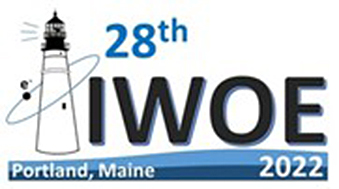 Workshop on Oxide Electronics (IWOE) to be held October 2-5 in Portland, Maine. Dr. Jain serves on the program committee with Ryan Comes of Auburn University, Charles H. Ahn of Yale University, and Divine Kumah of North Carolina State University. She is also the designer of the logo for the workshop (pictured).
Workshop on Oxide Electronics (IWOE) to be held October 2-5 in Portland, Maine. Dr. Jain serves on the program committee with Ryan Comes of Auburn University, Charles H. Ahn of Yale University, and Divine Kumah of North Carolina State University. She is also the designer of the logo for the workshop (pictured).
The workshop will showcase results of critical scientific importance as well as studies revealing the technological potential of functional oxide thin films to create devices with enhanced performance.
Menka Jain Receives NSF EAGER Funding

NSF EArly-concept Grants for Exploratory Research (EAGER) provide funding for work in its early stages on untested, but potentially transformative, research ideas or approaches. The work of EAGER grantees is usually considered high-risk, high-reward as it involves radically different approaches, applies new expertise, or engages novel disciplinary or interdisciplinary perspectives.
Associate Professsor of Physics and IMS faculty member, Menka Jain, has been award NSF EAGER funding for her research entitled CRYO: New Quantum Elastocaloric Demagnetization Refrigeration for the Millikelvin Range, which seeks to develop new technology in refrigeration.
Jain explains that, due to the increasing scarcity of helium and lack of portability or scalability of current technologies, there is a growing demand to develop alternative refrigeration technology that can cool below 1 Kelvin for supporting emerging applications, such as quantum sensors and quantum computers. The overarching goal of her research is to realize a solid-state millikelvin Quantum Elastocaloric Adiabatic Refrigeration technology in which a cooling cycle will be achieved via periodic application of elastic strain/stress, without or with small a magnetic field.
“Such an approach has the potential to materialize into a groundbreaking discovery for on-chip scalable cooling applications,” Jain explains.
Jain’s research will train a diverse group of students in thermal, material and quantum sciences. This training will be provided through the development of a new curriculum focusing on low temperature cooling in an advanced undergraduate teaching laboratory, in research projects through the McNair program for underrepresented undergraduate students, and through graduate-level research projects.
The research project is jointly supported by the Division of Chemical, Bioengineering, Environmental and Transport Systems and the Division of Materials Research.
IMS Faculty Members Awarded Internal Funding
The Office of the Vice President for Research (OVPR) offers internal funding for faculty projects that are at critical stages of development. This funding is provided to serve as high-leverage, strategic investment in outstanding faculty research projects. The Institute of Materials Science is proud to announce our faculty members who have received internal funding for the 2022-2023 academic year. We congratulate each of our faculty on their research accomplishments.
Scholarship Facilitation Fund

Menka Jain, Physics
Workshop: Quantum Matter: Dynamics and Sensor
Ying Li, Mechanical Engineering
Publication in Science Advances, a Premium Open-access Journal for Maximum Impact
Na Li, Pharmaceutical Science
Open access publication: Mechanisms and extent of enhanced passive permeation by colloidal drug particles
Xiuling Lu, Pharmaceutical Science
Imaging Tumor Heterogeneity and the Variations in Nanoparticle Accumulation using Perfluorooctyl Bromide Nanocapsule X-ray Computed Tomography Contrast
Helena Silva, Electrical and Computer Engineering
Circuit Simulation of an Erasable Physical Unclonable Function using a Phase-Change Memory Array
Research Excellence Program

Kelly Burke, Chemical and Biomolecular Engineering- $25,000
Implantable Degradable Films for Right-Size Post-Operative Pediatric Pain Control
Bodhisattwa Chaudhuri, Pharmaceutical Science- $49,998.08
Continuous manufacturing (CM) of the biological drug product for pulmonary drug delivery
Co-PIs: Yu Lei, Chemical and Biomolecular Engineering; Yanchao Luo, Nutritional Sciences; Matthew Stuber, Chemical and Biomolecular Engineering
Jie He, Chemistry- $50,363.63
C-H Bond Electroactivation of Nonpolar Organic Substrates in Water: Enzyme-Mediated Reaction Pathways in Microemulsions
Co-PIs: James Rusling, Chemistry
Menka Jain, Physics- $50,000
New approaches for on-chip cooling for applications in electronics and quantum devices
Co-PIs: Ilya Sochnikov, Physics
Seok Woo Lee, Material Science and Engineering- $25,000
Investigation on cryogenic shape memory effects of kinetically frozen ThCr2Si2-structured intermetallic compounds
James Rusling, Chemistry- $50,000
Rapid CRISPR-based blood test for early Alzheimer’s disease
Co-PIs: Breno Diniz, Uconn Health, Center for Aging; Islam Mosa, Chemistry
Tannin Schmidt, Biomedical Engineering- $74,853
Role of Proteoglycan 4 (PRG4) in Inflammatory Bone Loss
Co-PIs: Sun-Kyeong Lee, Medicine; Joseph Lorenzo, Medicine; Kshitiz Gupta, UCHC Biomedical Engineering; Alix Deymier, Biomedical Engineering
Yi Zhang, Biomedical Engineering- $49,863.63
A wireless, battery-free multimodal neural probe for simultaneous neuropharmacology and membrane-free neurochemical sampling in freely moving rodents
Co-PIs: Alexander Jackson, Physiology & Neurobiology; John Salamone, Psychological Sciences; Xudong Yao, Chemistry
Challa Kumar to Give Writing in Science Workshop at BITS
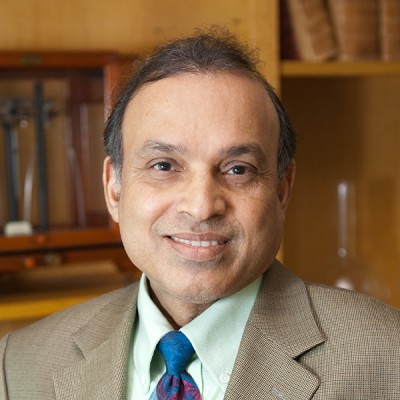
IMS faculty member Challa Vijaya Kumar will give the Writing in Science and Engineering Workshop at Birla Institute of Technology and Science (BITS). 253 Ph.D. students from various departments around the four campuses of BITS have enrolled in the 4-day 12-hour workshop which will be held live with virtual attendance available.
Dr. Kumar is currently serving as a Fulbright-Nehru Distinguished Chair and has embarked on a series of seminars across India. Awards in the Fulbright Distinguished Chairs Program are viewed as among the most prestigious appointments in the Fulbright Scholar Program.
In addition to the upcoming Writing in Science and Engineering workshop, Kumar has presented seminars at the Indian Institutes of Science Education and Research (IISER) Tirupati and Osmania University where he was presented with a certificate of appreciation for his support in organizing the “Current Trends and Futuristic Challenges in Chemistry” seminar in July.
